I took advantage of a day off to go hike in a new place today. It was typical wooded trails and some mountain bike trails through an oak dominated forest with some nearby cattail marshes. The trees are still holding on to their green leaves for the most part though there was some splashes of autumn color (mostly provided by gratuitous poison ivy).
All the oak trees meant there were tons of Amanita mushrooms around since they are mycorrhizal with the trees. Though I only found 3 species. The most common was Coker's Lavender Staining Amanita (Amanita lavendula) which is the North American 'version' of Amanita citrina, the False Death-Cap.
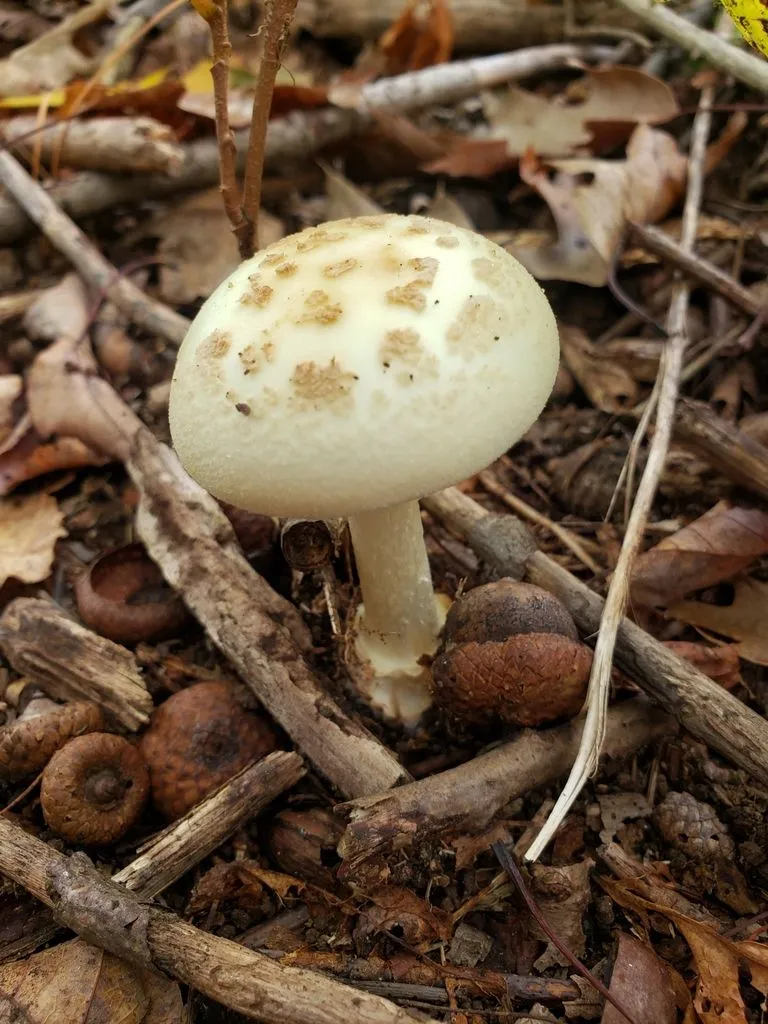
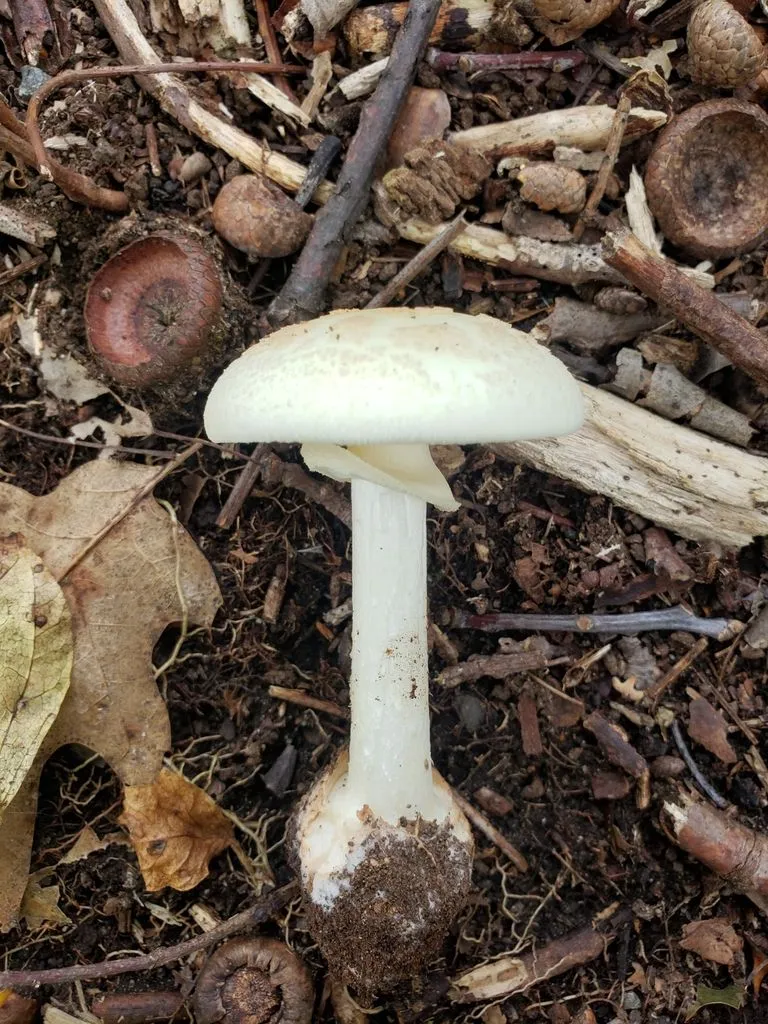
The other Amanita species I encountered were Tawny Grisette and the Poison Champagne Amanita.
I also encountered Wolf's Milk (Lycogala epidendrum) for the first time. It is a type of slime mold.
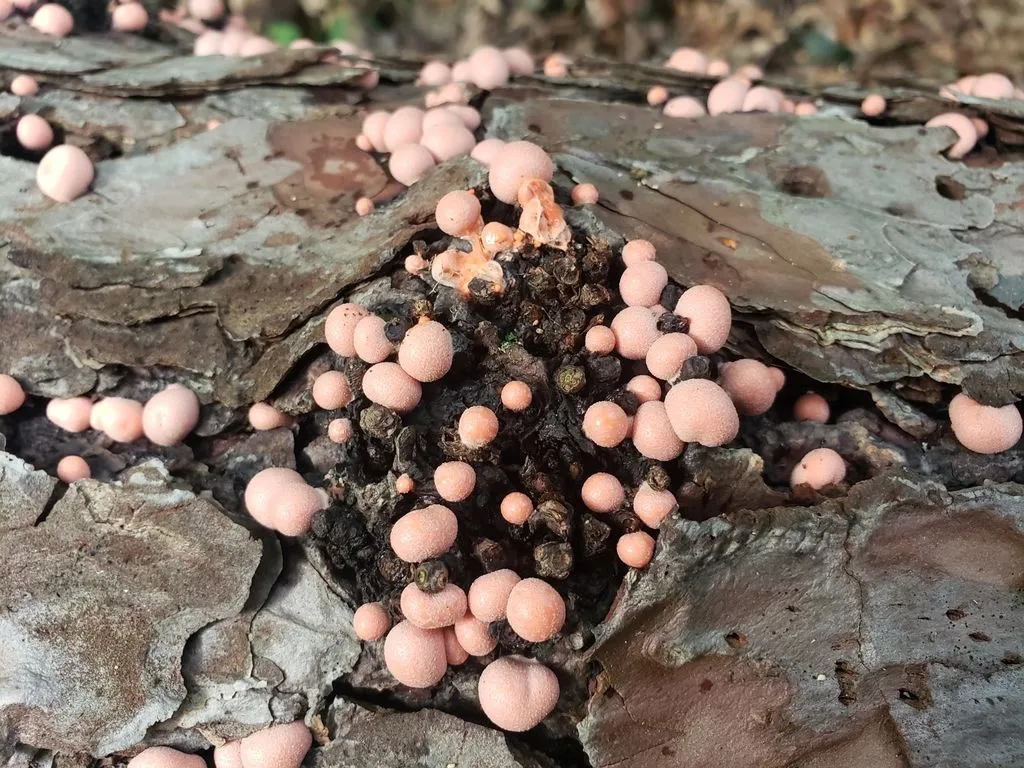
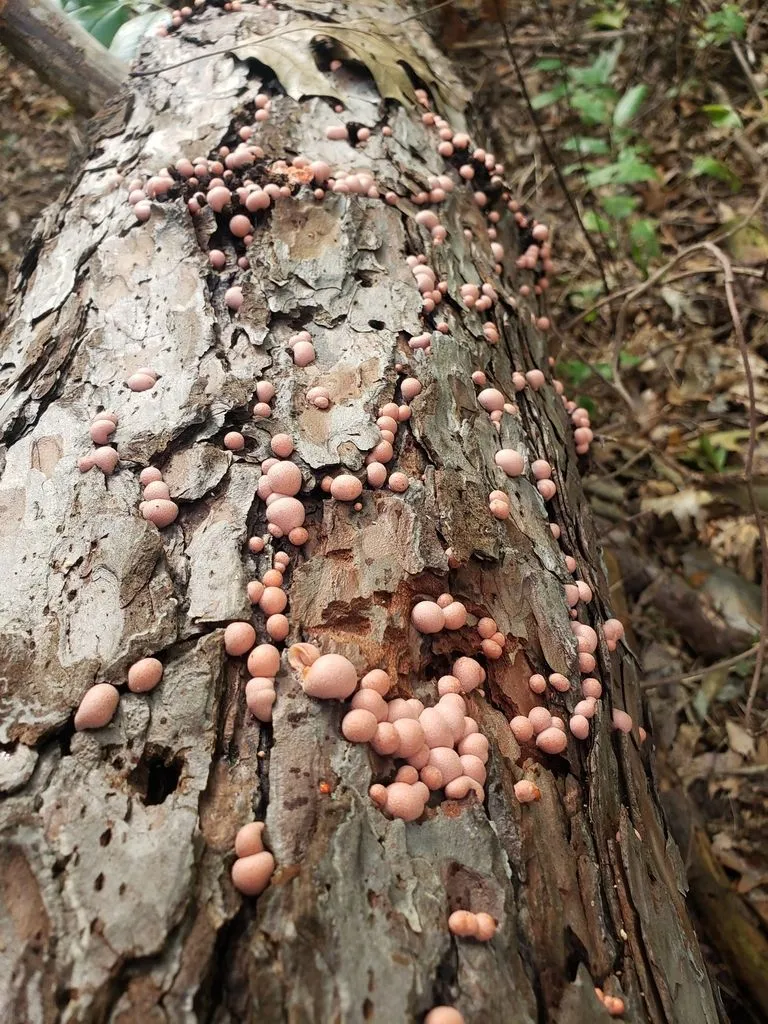
I found some Surprise Webcaps (Cortinarius semisanguineus) which might be my favorite Cortinarius species. It has an orange top and striking red gills on the underside.
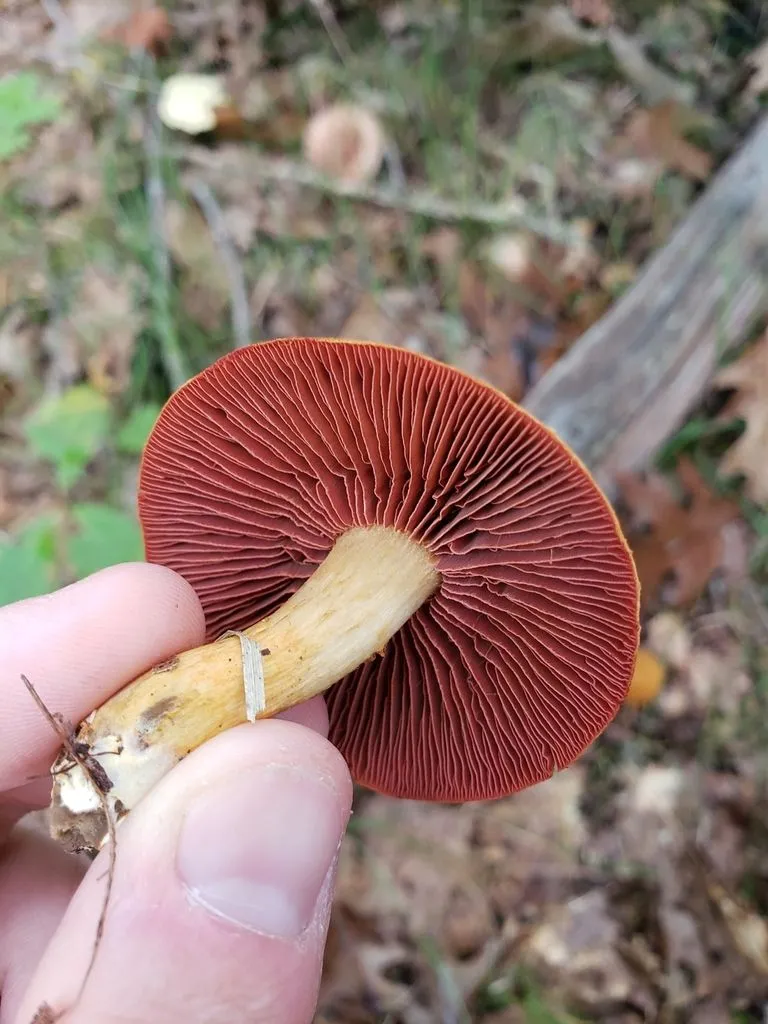
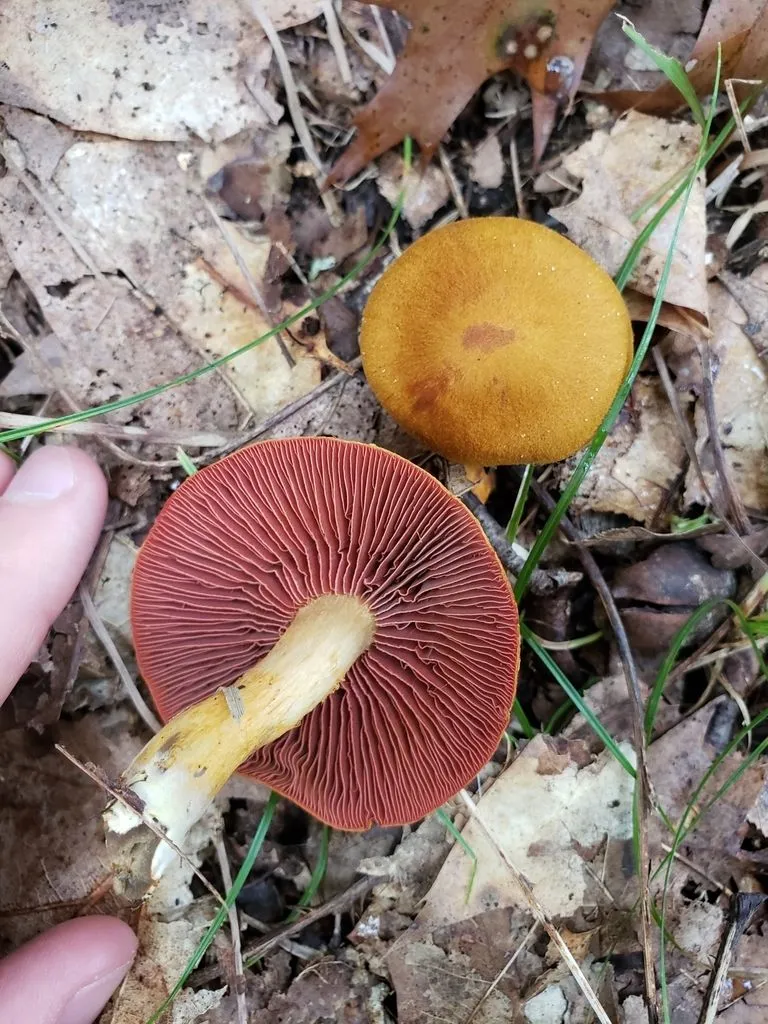
Then I stumbled across a single trumpet within a depression among some old oaks and moss. Looking around I started to see more and more of them. There were at least a few dozen Black Trumpets scattered at my feet and many more decayed and blackened.
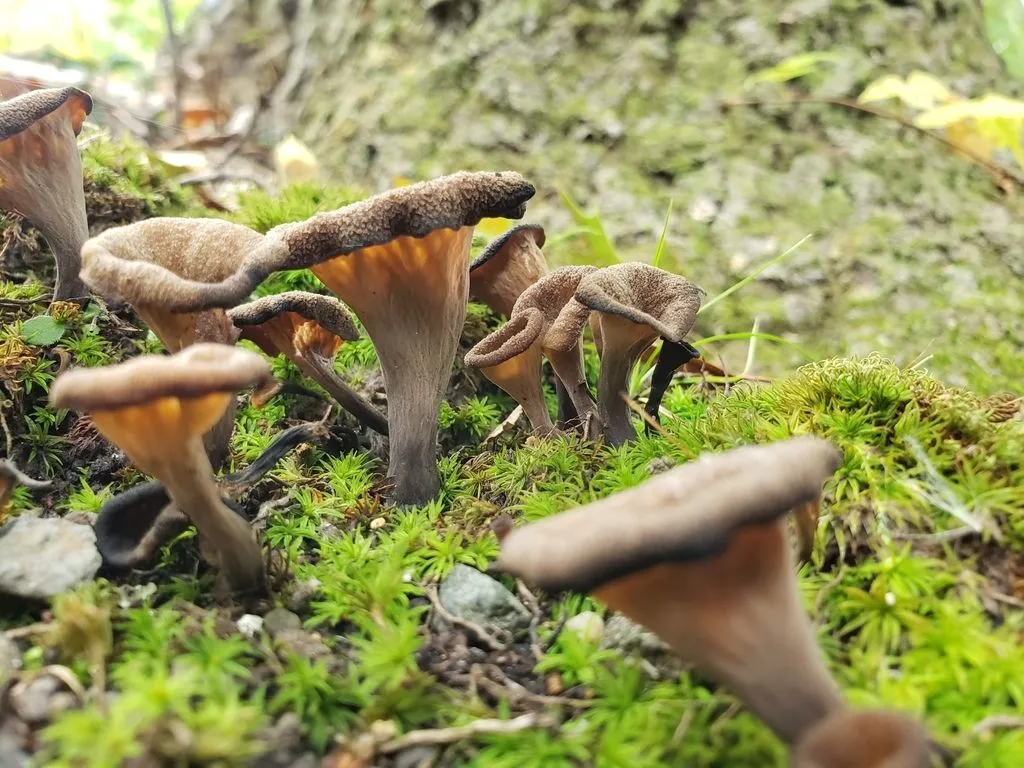
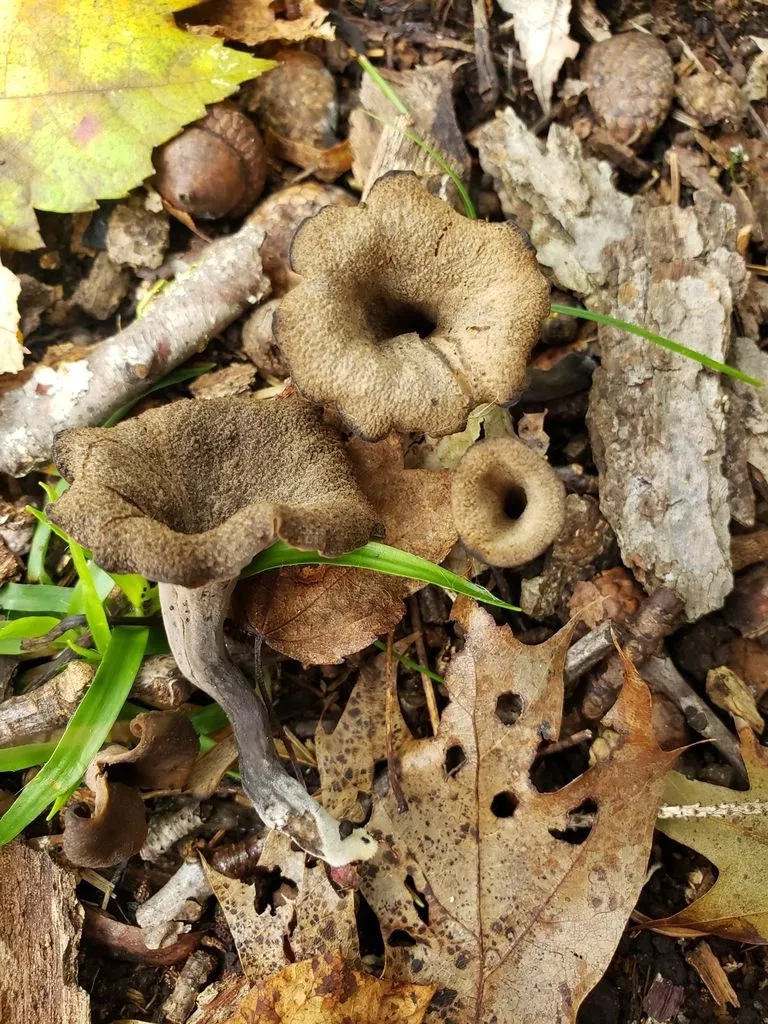
Black Trumpets (Craterallus fallax) are choice edibles. I snagged a few for later and they are drying currently.
Below is what it was like to look for them. They are expertly camouflaged into the forest floor. How many trumpets can you find in the small area below?

Hiking farther, I encountered some Tricholoma, Hygrocybe, Birch Polypore, some Hydnum, and lots of Russula and Cortinarius.
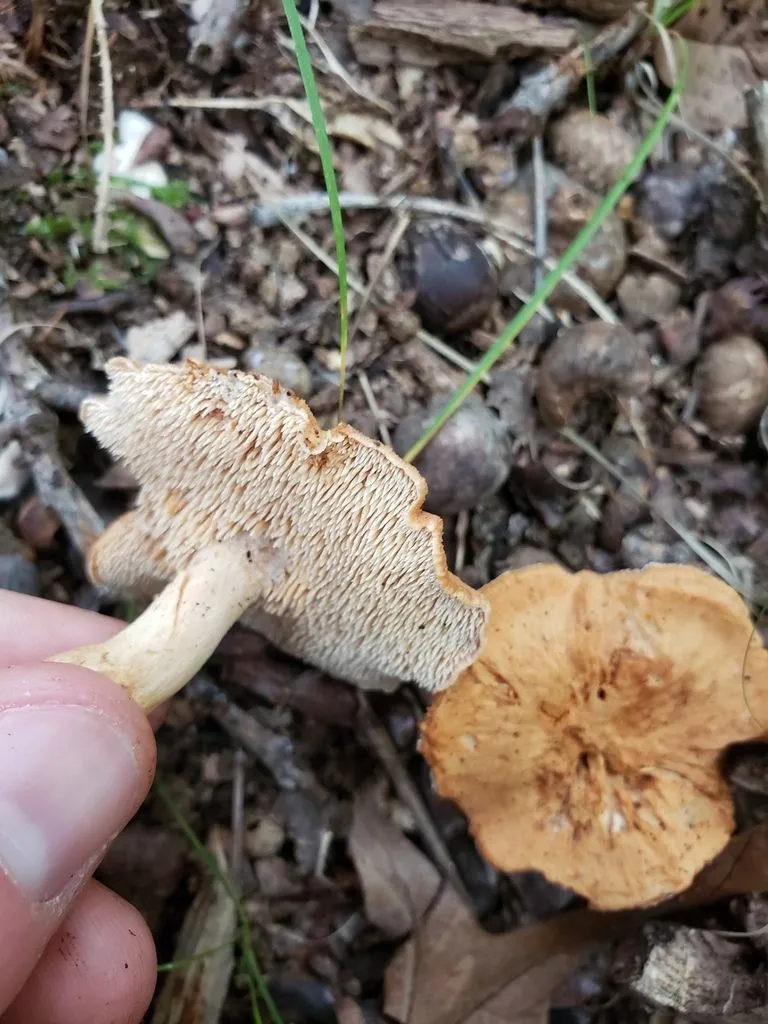
But something drew me to take a closer look at these mushrooms below. They had a faint purple hue to their caps. This is common for certain Cortinarius species but flipping one of these over I discovered that there was rustiness on the gills and no ring of rust on the stipe either.
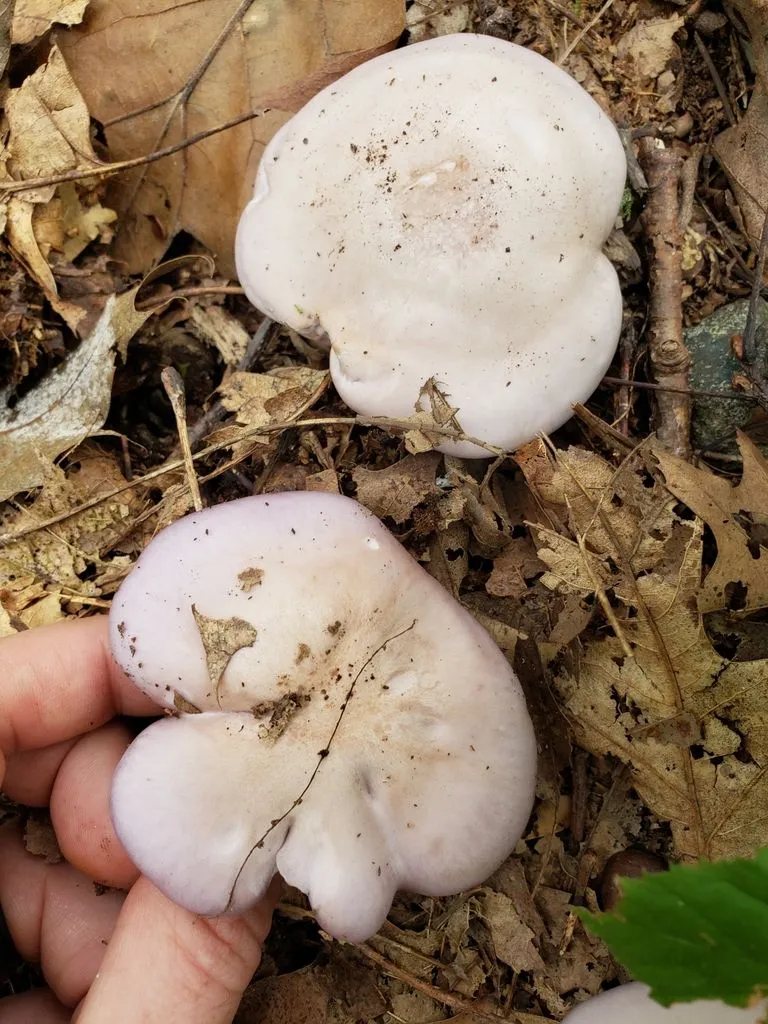

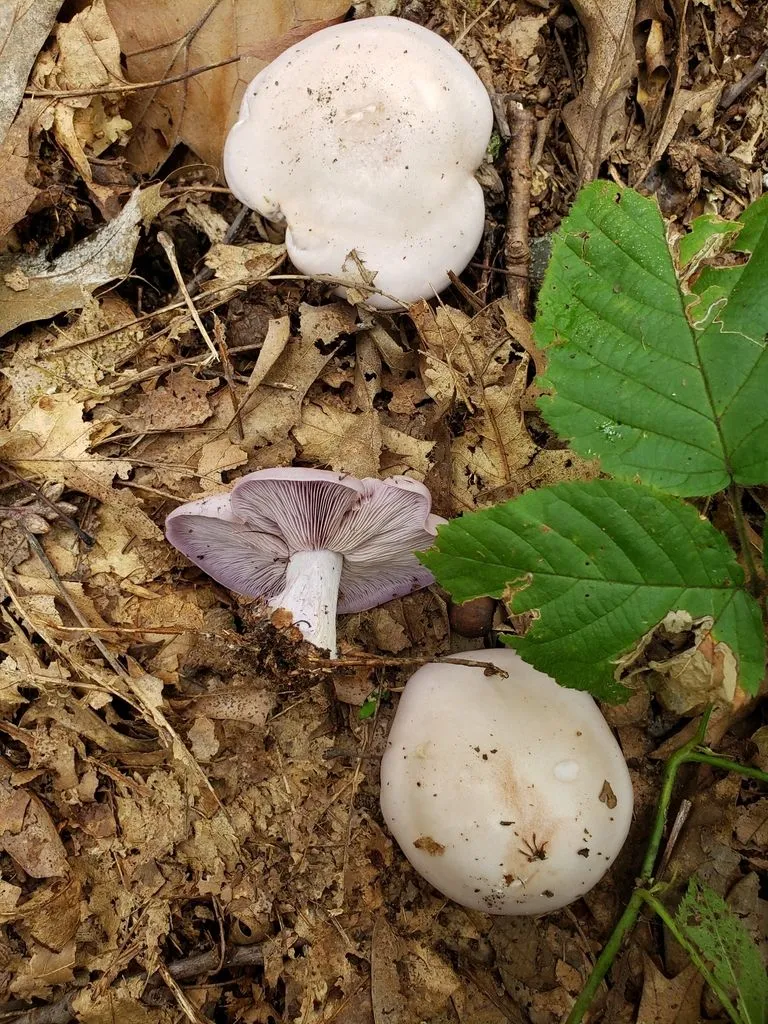
Blewits are edible but I think I'll pass for today. Maybe next time...
